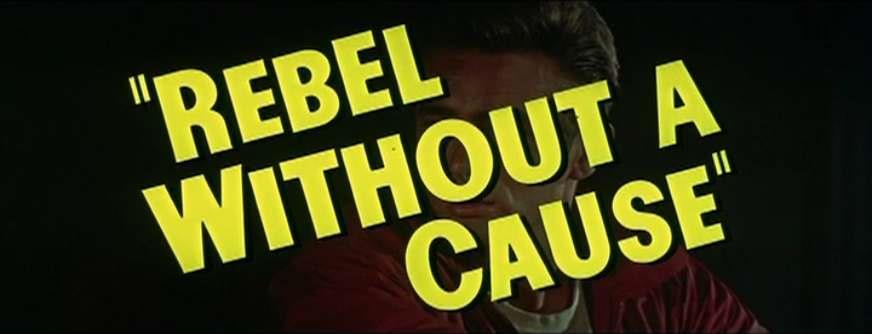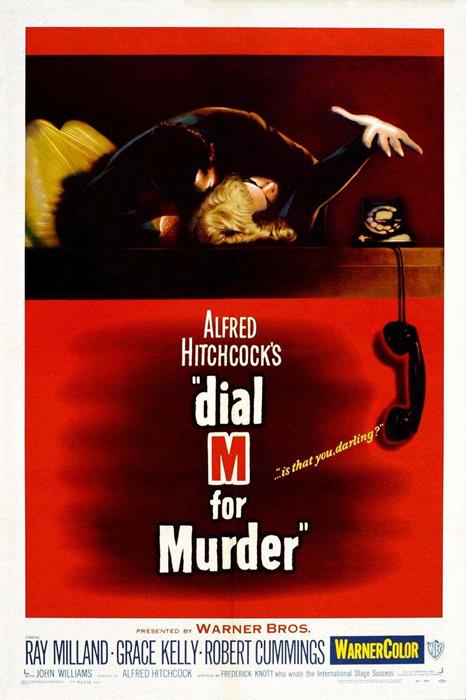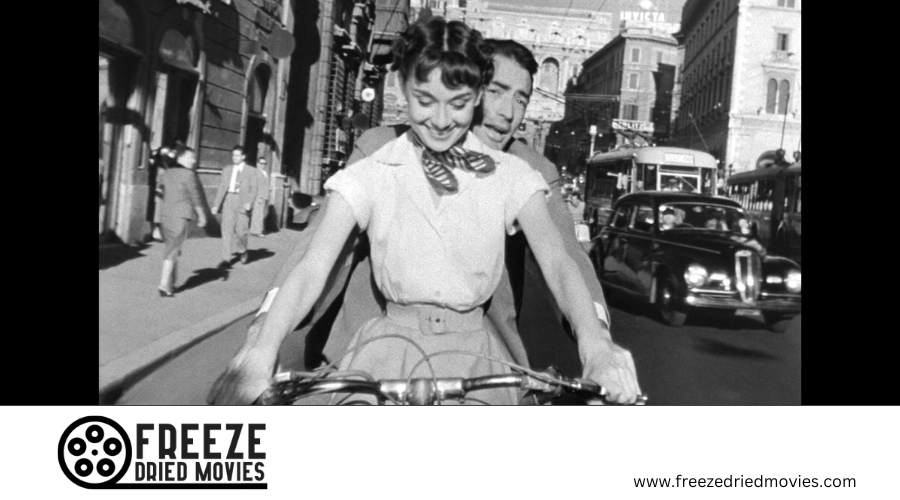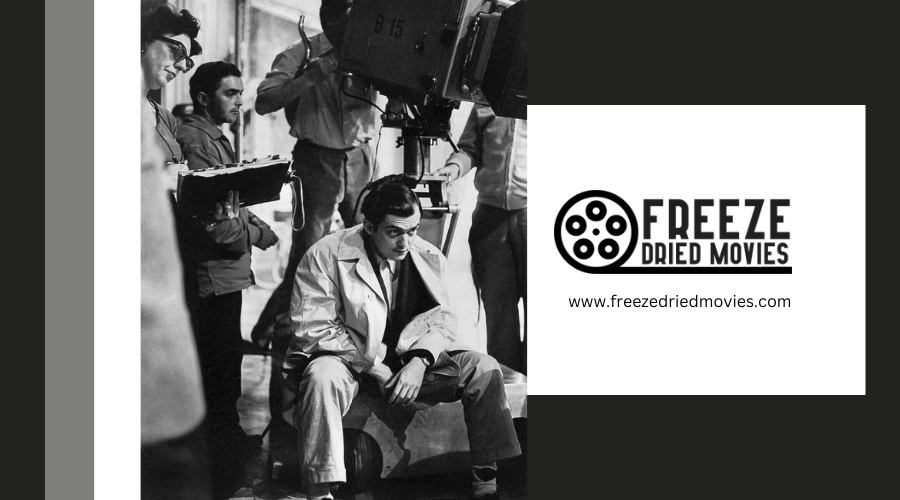Most Iconic Movie Scenes from the 1950s Movie Era: A Cinematic Time Capsule

The 1950s was a transformative decade for Hollywood, known for delivering some of the most memorable scenes in film history. This era saw the rise of spectacular blockbusters and the cementation of cinema as a key part of American culture. Audiences thronged to theaters to witness the dramatic grandeur of epics, the tension in groundbreaking thrillers, and the joyous escapism of musicals. Each genre contributed iconic moments that have stood the test of time, becoming part of the lexicon of cinema lovers worldwide.
Technological advancements during the 1950s significantly enhanced filmmakers' storytelling capability. The introduction of widescreen formats such as CinemaScope allowed for more immersive visuals, while color films became more prevalent, adding vibrancy to the on-screen narratives. Influential directors seized these innovations, creating masterpieces that featured compelling stories, unforgettable characters, and pioneering special effects.
Key Takeaways
- Hollywood in the 1950s produced scenes that have become timeless pieces of cinematic art.
- Technological innovations during the decade revolutionized the visual and storytelling aspects of film.
- The era was marked by acclaimed directors and actors creating films across diverse genres that received global recognition.
The Birth of Blockbusters
The 1950s marked a significant era in cinematic history, introducing audiences to high-budget spectacles and epic storytelling that would define the concept of a blockbuster.
Ben-Hur and The Ten Commandments

In 1959, audiences were introduced to Ben-Hur, a monumental film boasting a then-unprecedented budget and a legendary chariot race scene. Its impact was profound, with strong performances and grand sets that transported viewers back to Ancient Rome. Ben-Hur exemplified the blockbuster ethos, creating a cinematic event that was not to be missed.
Another landmark title, The Ten Commandments (1956), crafted by legendary director Cecil B. DeMille, depicted the biblical tale of Moses with grandeur and scale, using pioneering special effects for the parting of the Red Sea scene. These films not only captivated viewers but also set new standards for what was possible in film production.
Disney's Fairy Tale Adaptations
During this same period, Disney was creating its own magic with fairy tale adaptations. The release of Cinderella in 1950 marked the beginning of a new era for Disney blockbusters. Through its animation, Disney reimagined classic stories and presented them to the delight of both children and adults, thereby setting the stage for the future of animated feature films.
Both live-action epic tales and animated classics pushed the boundaries of their respective genres, showcasing the diverse nature of blockbuster films. This pivot toward lavish productions would shape the movie industry for decades to come.
Influential Directors and Their Masterpieces
The 1950s film era was a golden age for cinema, giving rise to a number of directors whose work would leave an indelible mark on the industry. From Hitchcock's gripping thrillers to Kurosawa's riveting tales of samurai, these directors crafted some of the most enduring masterpieces of the time.
Alfred Hitchcock's Thrillers

Alfred Hitchcock is synonymous with the thriller genre, having directed some of the most intense and suspenseful films of the 1950s. His masterpieces like Rear Window and North by Northwest are still studied today for their expert craftsmanship and innovation in suspenseful storytelling. Vertigo is considered one of his greatest films, while Dial M for Murder showcases his ability to create tension in a confined space.
Billy Wilder's Versatility

Billy Wilder was a versatile director who moved seamlessly across genres. He gave the world iconic films like Some Like It Hot and Sunset Boulevard, each a classic in its own right. Wilder's work is revered for its sharp wit and complex characterizations, earning him a place among Hollywood's elite directors.
Akira Kurosawa's Japanese Epics
Akira Kurosawa introduced Japanese cinema to the global stage with epic films such as Seven Samurai and Rashomon. His meticulous attention to detail and potent storytelling made him a monumental figure in world cinema. Kurosawa's influence is vast, inspiring generations of filmmakers across the globe.
Stanley Kubrick's Paths of Glory
Although best known for his later works, Stanley Kubrick made an unforgettable impression with Paths of Glory. This anti-war film is celebrated for its raw emotion and unflinching critique of the military hierarchy, aspects that signaled Kubrick's emerging directorial brilliance.
John Ford's Western Landscapes
The quintessential director of the Western genre, John Ford, captured the beauty and complexity of the American frontier. Working frequently with actor John Wayne, Ford's The Searchers remains a touchstone of the genre, embodying the spirit of the Wild West with its expansive landscapes and moral dilemmas.
Ingmar Bergman's The Seventh Seal
Swedish filmmaker Ingmar Bergman explored existential themes in his haunting masterpiece, The Seventh Seal. His work is characterized by deep philosophical questions brought to life through striking imagery and profound performances.
David Lean's Expansive Epics
David Lean was a master of epic film, known for his sweeping narratives and stunning cinematography. His collaboration with actor Alec Guinness produced memorable works like The Bridge on the River Kwai, which remains a benchmark for epic storytelling.
Stanley Donen and Gene Kelly's Musicals
The pairing of director Stanley Donen with actor and dancer Gene Kelly resulted in some of the most joyful and exuberant musicals of the era, including Singin’ in the Rain. Their work is renowned for its innovation in dance choreography and timeless musical numbers.
Elia Kazan and Marlon Brando's Dramas
Director Elia Kazan and actor Marlon Brando joined forces to deliver powerful dramas that examined the human condition. Films like A Streetcar Named Desire showcase their ability to delve into complex characters and social issues, leaving a lasting impact on American theater and cinema.
Iconic Actors and Their Legendary Roles
The 1950s was a golden era for cinema, producing films that showcased towering performances by actors whose roles have become the stuff of legend. These stars embodied characters that would become inseparable from their own personas, leaving a lasting impact on the landscape of film.
Marilyn Monroe's Rom-Com Charm
Marilyn Monroe dazzled audiences with her blend of sensuality and wit in Some Like It Hot (1959). Her portrayal of Sugar Kane, a ukulele-playing singer with a penchant for saxophone players, cemented her status as a rom-com icon.
James Dean's Rebel Persona

An everlasting symbol of teenage disillusionment, James Dean rebelled against 1950s conformity in Rebel Without a Cause (1955). Dean's intense performance as Jim Stark provided a voice to the restless youth of the era.
Audrey Hepburn's Roman Adventure

Audrey Hepburn stole hearts as the princess on a liberating journey in Roman Holiday (1953). Her enchanting Roman escapade earned her an Academy Award and made her a beloved figure of grace and romance.
Cary Grant's Elegant Escapades
The embodiment of charm, Cary Grant offered a riveting mix of suspense and humor in Alfred Hitchcock's North by Northwest (1959). His role as Roger Thornhill, an adman mistaken for a spy, added a sophisticated thrill to his illustrious career.
James Stewart's Everyman Appeal

James Stewart showcased his exceptional range in Hitchcock's classics, including the role of Scottie Ferguson in Vertigo (1958) and L.B. "Jeff" Jefferies in Rear Window (1954). His portrayal of men caught in extraordinary circumstances solidified his everyman appeal.
Henry Fonda's 12 Angry Men
In an intense study of justice and morality, Henry Fonda starred as Juror 8 in 12 Angry Men (1957), a man who challenges his fellow jurors to rethink their assumptions. Fonda's performance is a masterclass in understated conviction.
Grace Kelly's Cinematic Allure
Grace Kelly brought elegance and sophistication to the silver screen in Rear Window and Dial M for Murder (1954). Her performances exuded a magnetic blend of vulnerability and poise, contributing to her timeless allure.
Exploring Genres of the 1950s
The 1950s heralded an era of cinematic innovation and genre diversification, capturing audiences with its gritty film noirs, fantastical science fiction, monumental westerns, vivacious musicals, intense romantic dramas, and epic historical films.
Rise of Film Noir and Mystery

The 1950s saw the film noir genre flourish with its unique blend of cynicism, moral ambiguity, and sexual motives. Movies like Sunset Boulevard and Dial M for Murder exemplified the complex storytelling and stylistic shadow play that became synonymous with the era's sense of post-war disillusionment.
The Surge of Science Fiction
Science fiction took to new heights as fears of the atomic age and space exploration captured the public's psyche. The Japanese film Godzilla became an international symbol of nuclear concerns, while American cinemas were filled with stories of aliens and otherworldly adventures, pushing the boundaries of the genre.
Westerns and Their Heroes
The Western genre celebrated the American frontier mythos, with films like High Noon serving as exemplars. Gary Cooper's portrayal of courage under fire and the scrutiny of morality and law became trademarks of the Western hero, a figure both flawed and honorable.
Musicals and Dance Extravaganzas
Musicals in the 1950s exploded like a technicolor dream, showcasing elaborate dance numbers and catchy tunes. Singin’ in the Rain starred Gene Kelly, whose athletic dance style and charm helped to cement this breakthrough musical as a permanent fixture in Hollywood history.
Romantic and Social Dramas
Romantic and social dramas delve into the complexities of relationships and social issues. Films such as A Streetcar Named Desire examined human fragility, while 12 Angry Men dissected the intricacies of the justice system, demonstrating the decade's passion for introspective storytelling.
The Advent of War and Historical Films
War and historical films captured the tumult of World War I, World War II, and more, with epic narratives like Ben-Hur and the harsh realities of warfare depicted in Paths of Glory. These films provided a grand canvas for filmmakers to explore themes of heroism, sacrifice, and the human condition through historical contexts.
Technological Innovations and Filmmaking
The 1950s movie era welcomed substantial technological innovations that transformed the landscape of cinema, particularly color film processes and the influence of television on film production.
The Technicolor Revolution
Technicolor became vital in the 1950s, lending films a new vibrancy and visual appeal that became a hallmark of the decade. With the evolution of Technicolor, screens came alive with a richness and depth previously unseen. Films like "The Wizard of Oz" are often associated with this color revolution; although it was released in 1939, it was re-released in the 1950s, showcasing the splendor that Technicolor could bring to storytelling.
Key Innovations:
- Enhanced Three-Strip Process: This allowed for a greater spectrum of color and improved image quality.
- Wider Film Format: An increase in the film width allowed for a broader canvas to display the vivid Technicolor imagery.
Notable Technicolor Films of the 1950s:
- "Singin' in the Rain" (1952)
- "The African Queen" (1951)
The Impact of Television on Film
Television's advent in the 1950s presented a unique challenge for the film industry, spurring several technological advancements in response. Studios realized that to compete, they needed to offer an experience that television couldn't replicate. Consequently, it ushered in a period of experimentation with widescreen formats like CinemaScope, which provided a more immersive experience comparable to a theatrical performance.
Adaptations to Compete with Television:
- Introduction of Cinemascope: Offering an aspect ratio of up to 2.55:1, it created a wider, more engaging perspective.
- Enhancing the Theatrical Experience: Investments in better sound systems and more comfortable seating arrangements.
Films That Leveraged New Technologies:
- "The Robe" (1953) - First film released in CinemaScope.
- "20,000 Leagues Under the Sea" (1954) - Notable for its special effects and Cinemascope presentation.
Global Cinema and Cross-cultural Influences
The 1950s marked an era of significant cinematic movements that transcended national borders, laying the foundations for modern filmmaking and influencing generations of directors and film enthusiasts.
The Japanese Cinema Boom
Akira Kurosawa emerged as a monumental figure in Japanese cinema during the 1950s. His 1954 masterpiece, Seven Samurai, broke the mold for narrative complexity and technical expertise. With actors like Toshiro Mifune, Kurosawa's films didn't just gain domestic fame but captivated audiences worldwide, showcasing Japan's rich storytelling traditions and setting the stage for the global appreciation of Japanese cinema.
- Tokyo Story, another defining film of the era, directed by Yasujirō Ozu, poignantly depicted the nuances of family life. Its international acclaim facilitated a cultural dialogue on the human condition.
Italian Neorealism and Its Pioneers
Italian Neorealism offered a raw and unfiltered look at post-war society, with Vittorio De Sica at its vanguard. His film, Umberto D., illustrated the struggles of an impoverished pensioner and his dog, revealing the economic and social reality of Italy to a global audience.
- This movement's focus on everyday people and authentic locations broke from Hollywood's polished sets, fostering a wave of authenticity in global cinema.
The Emergence of the French New Wave
The French New Wave was a seismic shift in cinema characterized by its rejection of traditional filmmaking conventions. It emphasized personal expression, on-location shooting, and improvised dialogue, directly influencing the narrative and visual style of films worldwide.
- Directors like François Truffaut and Jean-Luc Godard rejected the status quo, inspiring filmmakers to adopt a more independent, stylized approach to storytelling. This movement broadened cinematic language and challenged directors from all corners of the globe to rethink their craft.
Cinematic Icons and Their Legacy
The 1950s film era birthed scenes that would burn themselves into the collective memory of cinema. The following iconic figures not only carved their legacies in the reels of classic films, but their portrayals have become a benchmark for the art of filmmaking.
Norma Desmond and the Faded Star
Sunset Boulevard's Norma Desmond, portrayed by Gloria Swanson, epitomizes the faded Hollywood star struggling against obsolescence. Her grand delusions and tragic fall are etched into the fabric of film history, making Desmond and Swanson symbols of a past golden era grappling with the ruthlessness of time.
The Common Man's Hero: Gregory Peck
Gregory Peck, often cast as a moral protagonist, elevated the archetype of the common man's hero. Although his portrayal of Atticus Finch in "To Kill a Mockingbird" dates from the early 1960s, it was informed by his consistent ability throughout the 1950s to embody integrity and unassuming strength.
Eva Marie Saint and the Femme Fatale
Eva Marie Saint brought complexity and depth to the image of the 'femme fatale’. Her roles often blended innocence with a haunting allure, inviting viewers to see beyond the archetype. Her performance in North by Northwest is a testament to her versatile talent and timeless appeal.
The Enigmatic Gloria Swanson
Gloria Swanson, beyond her embodiment of Norma Desmond, had a career that was both iconic and reflective of Hollywood’s transformative years. An enigmatic figure, Swanson traversed the silent era into the talkies, leaving an immutable mark on cinema through powerful performances and an indomitable spirit.
The Awards and Recognition of the Era
The 1950s film era is marked not only by its classic storytelling and cinematic mastery but also by the distinguished awards and recognition it garnered, particularly from the Academy Awards. Films and actors alike received their due honors, encapsulating a decade of memorable performances and cinematic milestones.
Best Picture Winners and Nominees
- 1950: All About Eve received the Academy Award for Best Picture, a film known for its sharp wit and the illustrious performance by Bette Davis. It triumphed over other notable nominees, such as Sunset Boulevard.
- 1953: From Here to Eternity took home the Best Picture award, an honor amidst a competitive field.
- 1954: Marlon Brando's On the Waterfront was awarded Best Picture, a testament to Brando's exceptional acting prowess and the film's compelling narrative.
Acting Honors and Memorable Performances
- Bette Davis: Her role in All About Eve was a tour de force, earning her a Best Actress nomination and securing her status as a film icon of the era.
- Marlon Brando: His performance in On the Waterfront not only earned him an Academy Award for Best Actor but also left an indelible mark on the industry with his powerful method of acting.
- Grace Kelly: Beyond Best Picture, the era was notable for memorable acting, with Grace Kelly winning Best Actress for The Country Girl in 1954.
Each accolade and nomination during the 1950s further solidified the enduring legacy of the films and actors of this golden age in cinema.
Frequently Asked Questions
The 1950s film era saw groundbreaking work in cinema, from unforgettable acting to pioneering special effects. The following touches upon the most significant scenes that continue to influence the film industry and culture today.
What scenes are considered the pinnacle of 1950s cinema in terms of cultural impact?
Key moments from Alfred Hitchcock's The Man Who Knew Too Much have been deeply influential, particularly the iconic scream that changed the narrative world. Such scenes went on to define the tension and narrative twists the era was known for.
Which 1950s movie scenes are most frequently parodied or referenced in modern media?
Some memorable parodies come from Marilyn Monroe's films, with the skirt-blowing scene from The Seven Year Itch often replicated or joked about in contemporary media due to its iconic status.
What are some iconic moments from 1950s films that showcased groundbreaking special effects or cinematography?
The decade saw incredible achievements in special effects, with movies like The War of the Worlds (1953) using innovative techniques to bring alien invasions to life on the big screen, captivating audiences with their visual spectacles.
Which scenes from 1950s movies are most often studied in film schools for their artistic significance?
Film schools frequently analyze the deep-focus cinematography of Touch of Evil (1958), examining the opening shot that lasts over three minutes without a cut, showcasing the era's growth in technical artistry.
What are the standout acting performances in 1950s movies that have resonated through the decades?
James Dean's performances in Rebel Without a Cause stand as a testament to the era's shift in portraying youthful angst and rebellion, embodying a character type that remains influential.
What unforgettable musical numbers from 1950s films continue to captivate audiences today?
Musicals of the 1950s produced numerous iconic numbers, such as those in Singin' in the Rain (1952), with Gene Kelly's rain-soaked dance being a defining image of the decade that has endured as a symbol of Hollywood’s Golden Age.




